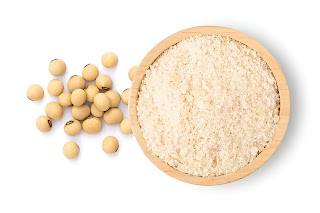Introduction to soy protein concentrate
Soybean protein concentrate (SPC) is a product of further processing of soybeans. Compared with ordinary soybean meal, its crude protein content is about 30% higher. Since the industrial production of SPC in the 1950s, it has been widely used in the food and feed industry.
1. Definition
Soy protein concentrate (SPC) refers to using soybeans as raw materials and removing the oil and low-molecular soluble non-protein components in soybeans through processing techniques such as crushing, peeling, extraction, separation, washing, and drying. After separation (mainly soluble sugar, ash, gliadin and various odor substances, etc.), the prepared soy protein product contains more than 65% (dry basis) protein.
2. Processing process
After extraction, low-temperature desolvation of soybean meal is preferred. High-temperature leaching of the meal can also be used, but the yield is low and the quality is poor.
The current methods for producing concentrated protein include moist heat extraction, dilute acid extraction, alcohol washing, ultrafiltration and membrane separation.
1) Moist heat extraction method
The wet heat extraction method was eliminated due to the poor flavor, color and functional properties of the extracted soy protein concentrate.
2) Dilute acid precipitation method
Utilizing the principle that the soybean meal powder leaching liquid has the lowest protein solubility at the isoelectric point (pH 4.3-4.5) state, the insoluble proteins and polysaccharides are separated from the soluble carbohydrates and low-molecular proteins by centrifugation, and then neutralized, concentrated, and dried and dehydrated. Concentrated protein powder is obtained.
This method can remove the fishy smell of soybeans at the same time. The dilute acid precipitation method produces concentrated protein powder. The protein has good water solubility (high PDI value), but it consumes a lot of acid and alkali, has a low protein yield, and has poor overall benefits.
3) Alcohol washing method
Using the principle that soluble protein has the lowest solubility when the alcohol concentration is 60% to 65%, the alcohol solution is mixed with the low-temperature desolubilized meal to wash the soluble sugars, ash and alcohol-soluble proteins in the meal. The alcohol solution is then separated by filtration, and alcohol and sugar are recovered. The slurry is dried to obtain concentrated protein powder. The protein powder produced by this method has better color and flavor, and less protein loss.
4) Ultrafiltration method
Ultrafiltration is a new method that has just begun to be explored. The soybean protein concentrate produced by it has good functional properties and a high protein yield, but the product cannot be dried.
5) Membrane separation method
The membrane separation method uses an ultrafiltration membrane to remove sugar to obtain concentrated protein, and a reverse osmosis membrane to dehydrate and recover water-soluble low-molecular proteins and sugars. No wastewater treatment engineering is required during production, and the product has a high nitrogen solubility index (NS).




评论
发表评论